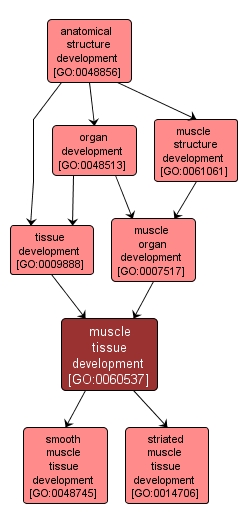GO TERM SUMMARY
|
| Name: |
muscle tissue development |
| Acc: |
GO:0060537 |
| Aspect: |
Biological Process |
| Desc: |
The progression of muscle tissue over time, from its initial formation to its mature state. Muscle tissue is a contractile tissue made up of actin and myosin fibers. |
|

|
INTERACTIVE GO GRAPH
|














